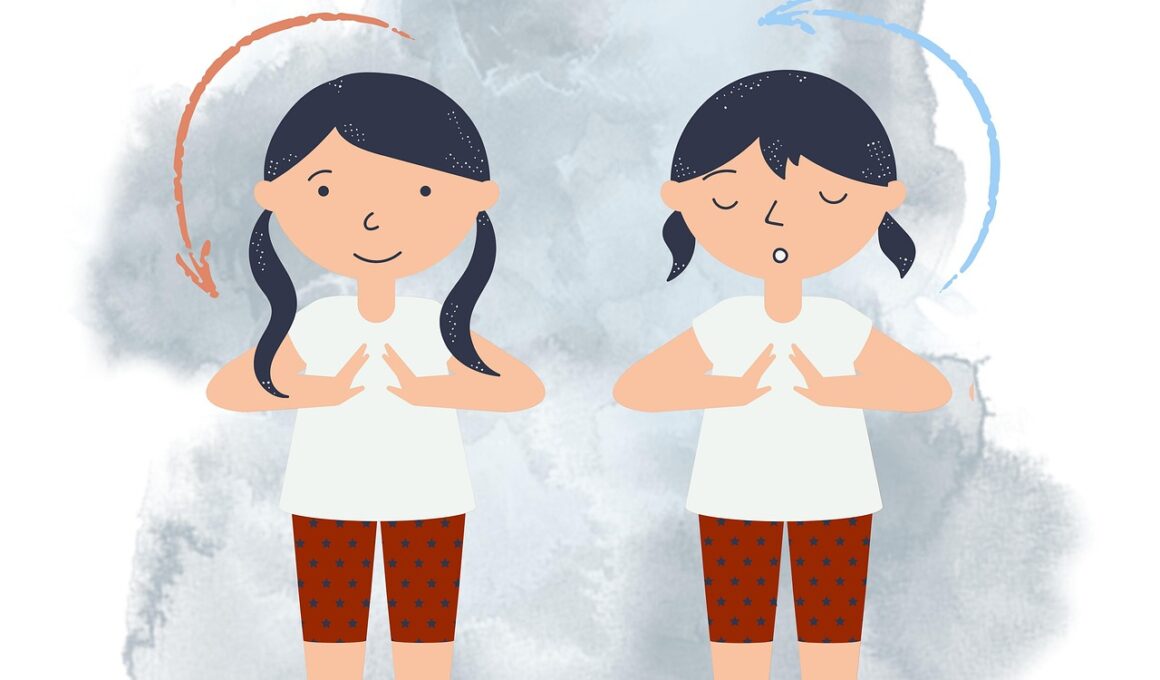Breath Training Tools Every Vocalist Should Try
For any vocalist, breath control is an essential skill that can dramatically enhance performance. Utilizing specific breathing techniques can help improve vocal strength and consistency. Various tools are available to assist in breath training, making the process enjoyable and efficient. One popular method is the use of a breathing belt, which wraps around the diaphragm and provides resistance during inhalation and exhalation. This resistance builds diaphragm strength and awareness. Additionally, vocalists can benefit from using apps specifically designed for breath control exercises. These applications often feature guided practices, tracking progress, and offering feedback. Another effective tool is a straw. Singing through a straw encourages proper airflow and helps vocal cords stay relaxed. It can also enhance vocal resonance. Ultimately, utilizing these tools consistently will lead to noticeable improvements in breath control, vocal stamina, and overall singing ability. Implementing a diverse set of tools ensures that vocalists have multiple strategies to engage their breathing effectively. Each tool has its unique benefits, and discovering personal favorites may take time.
An important aspect of breath training is understanding the mechanics involved in vocal production. Various tools can be instrumental in this educational journey. First, diaphragmatic breathing exercises can serve as a foundation. These exercises promote the use of the diaphragm instead of shallow chest breathing. Employing breathing techniques like the “4-7-8” method can also prove beneficial. This technique encourages holding the breath, promoting relaxation, and increasing lung capacity. Additionally, singing exercises with a focus on breath management can enhance the understanding of how breath supports sound production. Vocal warm-up videos can provide incredible guidance, demonstrating techniques that promote healthy singing habits. Many professionals create content that vocalists can utilize at any time. Portable breath control tools, like wind instruments, can also provide a fun way to strengthen lungs simultaneously while maintaining a musical aspect. Whether it’s a harmonica or a flute, these instruments can encourage breath support naturally while developing musicianship. Experimenting with various tools and methods is crucial for finding what best suits individual needs. This exploration can be enlightening, yielding various surprising benefits for vocalists.
Vocal Exercises for Improved Breath Control
There is an abundance of vocal exercises that can aid in developing better breath control. One such exercise is the lip trill, where vocalists produce sound while keeping lips loose and vibrating gently. This exercise fosters relaxation in the vocal cords and encourages smooth airflow. Breathing for extended periods while singing is another method that strengthens lung capacity. Practicing phrases with sustained notes can help develop endurance, enabling longer phrases while maintaining clarity and control. Incorporating staccato and legato singing techniques can also improve breath management while varying vocal approaches. Additionally, utilizing the ‘Hah’ exercise, where vocalists make a short exhalation on the sound “hah,” can significantly enhance breath support and engagement of the diaphragm. To maximize effectiveness, these exercises should be practiced regularly. Using tools such as a breath meter can provide valuable insights into lung capacity and airflow management. Continuous practice will ultimately refine techniques enabling vocalists to access higher ranges and communicate more effectively through song. Engaging with fellow singers while practicing can also motivate improvement and provide support.
Using feedback is crucial to monitor progress in breath training. Various technology options can help track and assess vocal performance, leading to enhanced breath control. Singers can utilize video recordings to analyze posture and breathing techniques. Observing oneself may reveal areas of improvement previously unnoticed. Similarly, audio recordings can highlight vocal strengths and weaknesses, guiding adjustments in breath strategies. Breath support apps can be used to time exercises and provide structured routines, improving overall efficiency. Vocal coaches play a pivotal role in this process, offering professional insight and personalized feedback to vocalists. Seeking professional advice during breath training can yield accelerated results. Joining local singing workshops or online forums can also foster a supportive community for sharing tips, experiences, and feedback. Collective learning can enhance personal growth while motivating individuals to strive for improvement. Consistency is essential in this journey. Setting specific goals for breath training, whether related to song performance or vocal endurance, can create a framework for sustained practice. Therefore, investing time, energy, and creative approaches to breath training is vital for vocalists seeking to elevate their performances.
Breath Control and Performance Anxiety
Many vocalists experience performance anxiety, which can significantly influence their breath control. Addressing this anxiety through breath training is vital for achieving a confident presence on stage. Engaging in mindfulness and relaxation techniques can be instrumental. Practicing deep, steady breathing before performances equips vocalists with tools to calm the nervous system. Various apps and software can guide in practicing these fundamental relaxation techniques. Visualization exercises can also prove beneficial; imagining successful performances can influence physical readiness and decrease anxiety levels. Vocalists can practice positive affirmations, reinforcing their abilities while practicing breath control methods to blend preparation and mental readiness. In tandem with breathing exercises, recognizing the impact of physical conditioning is important. Regular physical activity contributes positively to endurance and overall energy levels during performances. Engaging in activities such as yoga or Pilates may develop strength, flexibility, and balance. Voice workshops often offer techniques that merge physical readiness and breath management. Ensuring body and mind are in harmony creates a conducive environment for a successful performance, enabling vocalists to utilize their developed breath skills freely on stage.
Incorporating breath training into daily routines can lead to remarkable improvements over time. Creating a structured practice schedule can ensure that breath exercises become an integral part of a vocalist’s development. It is crucial to create a dedicated space for practice, free of distractions, ensuring focus during each session. Allocating specific times each day for breath training can enhance commitment levels and track progress. Many vocalists find it useful to set short term and long-term goals. Emphasizing gradual improvement will help maintain motivation throughout training. Utilizing reminders and sticking with a practice buddy can deepen accountability in reaching these goals. Celebrating achievements, no matter how small, can foster a positive mindset about the entire process. Keeping a journal to document daily practice and reflections can also be insightful, allowing vocalists to track improvement and set new objectives as they advance in their journey. These practices guarantee progress while allowing singers to reflect on their evolving relationship with breath control. Making breath training a priority will yield immense dividends, leading to vocal mastery and a more profound expression of artistry.
Conclusion and Continued Learning
Breath training tools are fundamental for any vocalist wanting to improve their craft. Engaging with various techniques and tools leads to unprecedented growth in vocal capabilities. Beginners need to explore diverse options, selecting those that resonate most closely with their personal needs and style. Ultimately, commitment to consistent practice is vital in achieving the desired effects of breath training. Continuing education in singing can amplify these benefits. Workshops, online courses, and vocal coaching offer great opportunities for further growth while remaining open to new methods. Attending concerts and observing seasoned performers can provide unique insights into breath management and stage presence. Networking within the vocal community can open potential collaborative opportunities that enhance learning experiences. All vocalists should embrace the truth that growing their craft is a lifelong journey. Investing time in developing breath control will lead to improved resilience, artistry, and enjoyment in vocal expression. Remember, the path to mastery is filled with joy and numerous moments of discovery, reminding every vocalist that they possess the power to infinitely create and inspire.
Continuous exploration and adaptation are vital while navigating the world of breath training tools and techniques. Each singer’s journey will be unique, yet shared experiences pave the way for collective learning. Ultimately, maintaining a flexible mindset towards training can help singers embrace different styles, genres, and delivery methods. Emphasizing the joy of singing while systematically working on breath control will create profound results and enrich performances. Building a strong foundation through targeted training is the key to unlocking one’s full vocal potential. Every vocalist should embrace the challenge of breath training as an opportunity to enhance artistry and connect with their audience more significantly.


